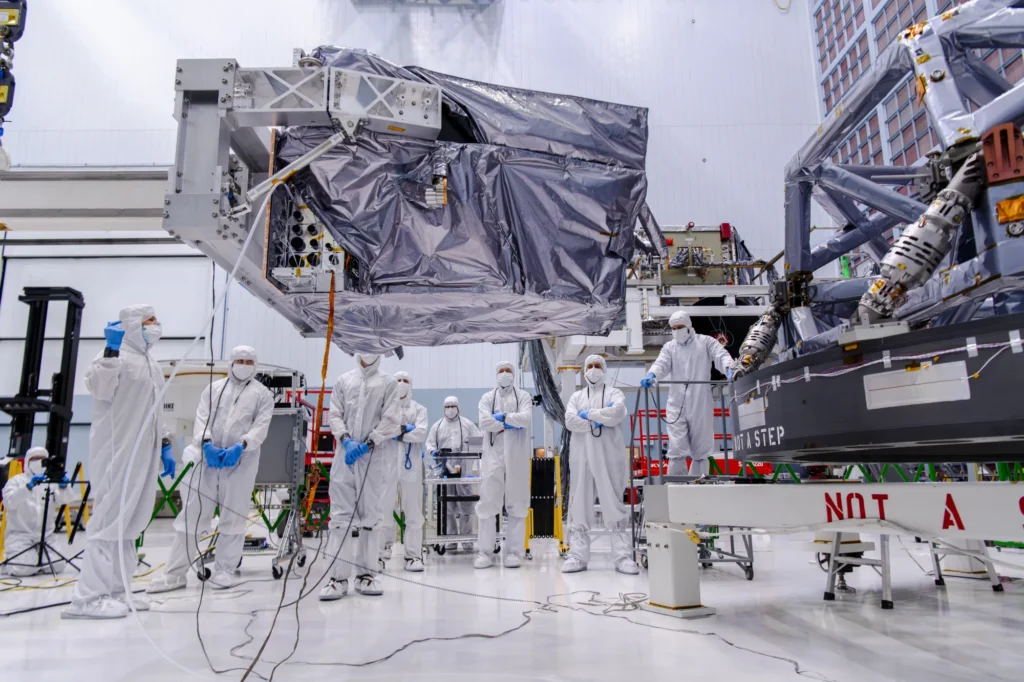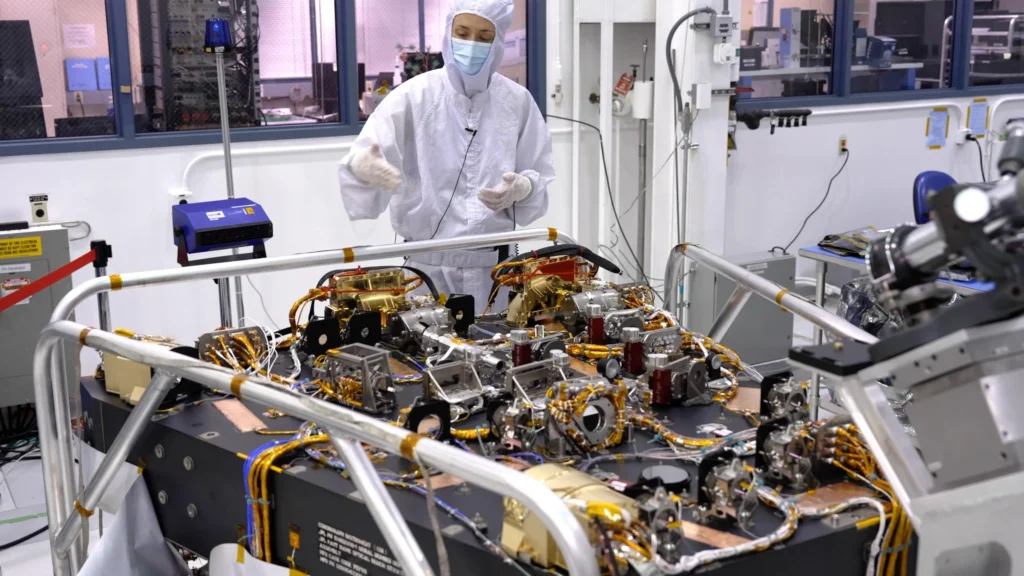Specialists at the Goddard Space Center have successfully installed a coronagraph on the Roman telescope. In the future, astronomers will be able to use this technology to search for habitable worlds on other stars.

The Roman telescope is scheduled for launch in 2027. It will be one of the new generation of space observatories that are expected to replace Hubble and James Webb. Because of this, it is sometimes called their successor.
The main purpose of the Roman telescope is to observe the large-scale structures of the Universe and to study the influence of dark matter on galaxies. However, the spacecraft will accomplish many other tasks, one of which is to search for and obtain direct images of exoplanets. This is where the coronagraph becomes useful. This is the name of a device that cuts off the light of a star, making it possible to observe its neighborhood and the bodies orbiting around it.
The coronagraph of the Roman telescope has a diameter of 1.7 meters. It is equipped with a complex set of masks and active mirrors that will obscure stars, which, in theory, will make it possible to get direct images of the exoplanets orbiting around it.

During the installation process, NASA specialists integrated the coronagraph into the Instrument Carrier of the Roman telescope. Then they checked the presence of protective layers. The coronagraph is designed to operate at room temperature, so insulation is critical to its success. It will also provide an additional boundary to block stray light that might otherwise interfere with observations.
It is worth noting that the Roman coronagraph is a technology demonstrator. It should practically test the technology to search for exoplanets and demonstrate its capabilities. The success of the experiment will be an important step toward NASA’s projected HabEx mission. Its goal is to build a space telescope capable of photographing and studying earth-like worlds in the habitable zone of other stars.
The Roman telescope is currently scheduled for launch in 2027. It will be placed on a halo-orbit around the L2 Lagrangian point of the Sun-Earth system. The James Webb telescope is currently operating there.
Earlier we told you about the first images of another coronagraph mounted on the recently launched GOES-19 geostationary satellite.
Provided by NASA


